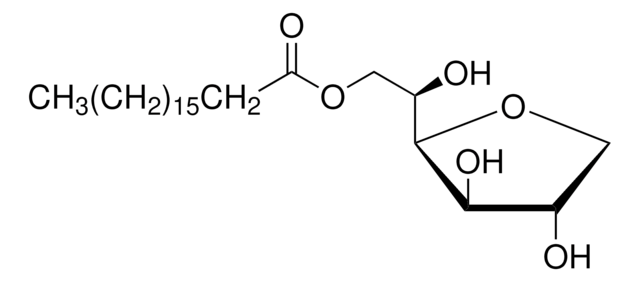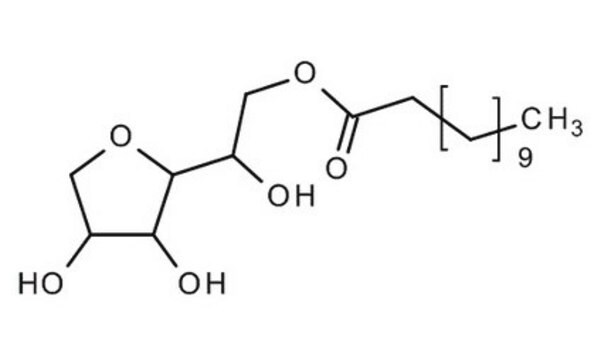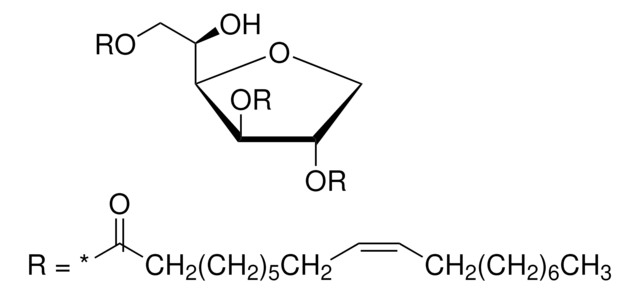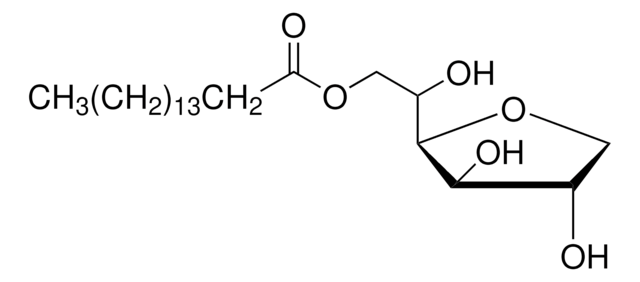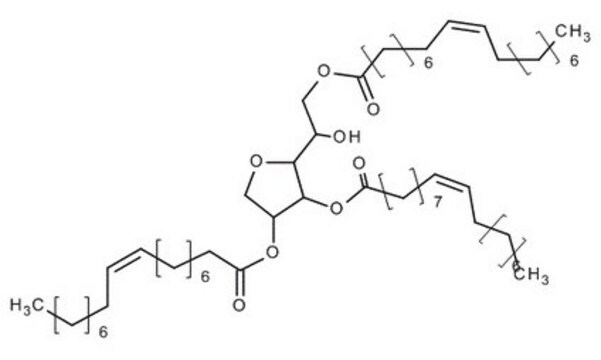S6635
Span® 20
Synonyme(s) :
Sorbitan laurate, Sorbitan monolaurate
About This Item
Produits recommandés
Description
non-ionic
Niveau de qualité
Poids mol.
346.47 g/mol
Caractéristiques du produit alternatif plus écologique
Use of Renewable Feedstocks
Learn more about the Principles of Green Chemistry.
sustainability
Greener Alternative Product
Concentration
≥44% (GC)
Autre catégorie plus écologique
, Aligned
Chaîne SMILES
CCCCCCCCCCCC(=O)OC[C@@H](O)[C@H]1OC[C@H](O)[C@H]1O
InChI
1S/C18H34O6/c1-2-3-4-5-6-7-8-9-10-11-16(21)23-13-15(20)18-17(22)14(19)12-24-18/h14-15,17-20,22H,2-13H2,1H3/t14-,15?,17+,18+/m0/s1
Clé InChI
LWZFANDGMFTDAV-WYDSMHRWSA-N
Description générale
Application
Autres remarques
Informations légales
Code de la classe de stockage
10 - Combustible liquids
Classe de danger pour l'eau (WGK)
WGK 1
Point d'éclair (°F)
>300.2 °F - closed cup
Point d'éclair (°C)
> 149 °C - closed cup
Équipement de protection individuelle
Eyeshields, Gloves, type N95 (US)
Faites votre choix parmi les versions les plus récentes :
Déjà en possession de ce produit ?
Retrouvez la documentation relative aux produits que vous avez récemment achetés dans la Bibliothèque de documents.
Les clients ont également consulté
Notre équipe de scientifiques dispose d'une expérience dans tous les secteurs de la recherche, notamment en sciences de la vie, science des matériaux, synthèse chimique, chromatographie, analyse et dans de nombreux autres domaines..
Contacter notre Service technique



